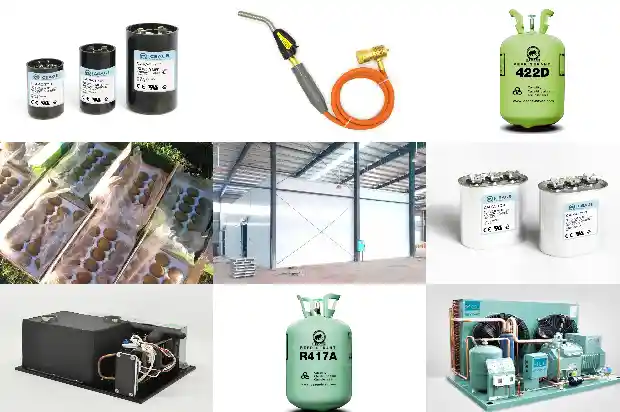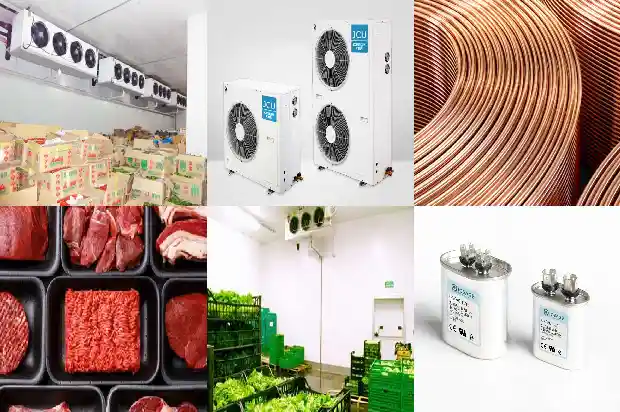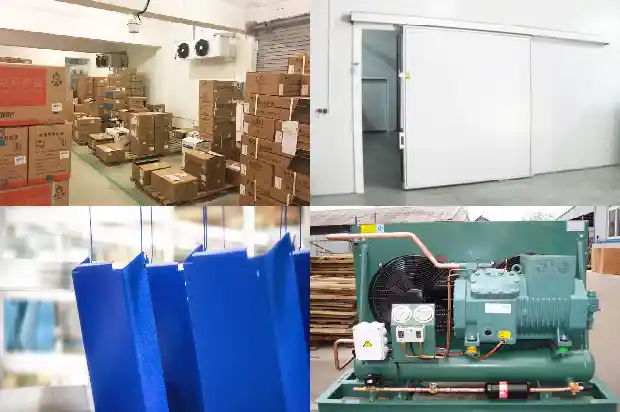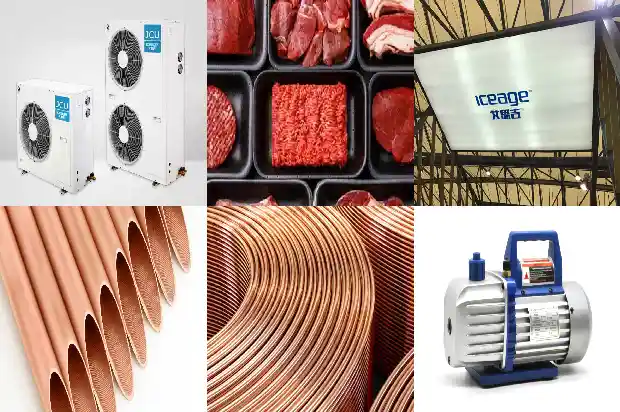Function and Working Principle of Subcooler
2024-09-20
The Role and Working Principle of a Subcooler
In larger refrigeration systems, in order to provide better user experience and usage effects, a subcooler is added. So what kind of magical device is a subcooler? Let's learn about it today.
I. What is subcooling?
The so-called "subcooling" is to re-cool the condensed saturated liquid through a certain device (such as a subcooler) and method (or measure) so that its temperature is lower than the saturated temperature under condensation pressure. This is called subcooling. Comparing the liquid temperature before subcooling with the temperature after subcooling, the difference is the "degree of subcooling".
II. The role of subcooling
In larger refrigeration systems, the installation range of indoor units is expanded, and the length of piping between indoor and outdoor units and the drop between indoor and outdoor units become larger. In refrigeration scenarios, the refrigerant flow through the expansion valve of the indoor unit changes due to the refrigerant state before it. If bubbles are generated due to the refrigerant state in front of the expansion valve, the specific volume increases, and the refrigerant flow through the expansion valve (in the fully open state) is limited, and the refrigeration capacity is reduced. To prevent this phenomenon, it is necessary to pre-cool to a level equivalent to or above the liquid pipe pressure loss caused by the piping length or drop (when the indoor unit is higher than the outdoor unit).
III. Brief introduction to the principle of the subcooler
In larger refrigeration systems, in order to reduce the temperature of the refrigerant liquid entering the throttle valve and reduce the flash gas generated during or after throttling and appropriately improve the refrigeration efficiency, in the process design, a device dedicated for subcooling - a subcooler is installed after the liquid storage tank (a system using a throttle valve for throttling must have a liquid storage tank).
Its structural forms are sleeve type, spray type or plate heat exchanger, etc. The principle is to use cooling water with a temperature lower than that of the condensed saturated liquid to cool again (such as deep well water). Generally, the temperature can be reduced by 3°C to 5°C compared to before cooling (that is, the degree of subcooling is 3°C to 5°C).
IV. Other subcooling applications
There are also some small fluorine refrigeration systems.
At the same time, it also heats up the temperature of the return pipe to avoid liquid hammer that may occur when the compressor sucks in overly moist steam.
In a system with capillary throttling, the capillary and the return pipe (suction pipe) are combined and run together. Some are welded together, some are covered with a heat-shrinkable sleeve, some pass through the return pipe, and some are wound around the return pipe. There are also some that directly pass the capillary or liquid supply pipe through the box body.
The capillary and the return pipe exchange heat, so that the liquid refrigerant before throttling exchanges heat and cools with the low-temperature refrigerant vapor in the return pipe to obtain subcooling. This can not only reduce the liquid that may be entrained in the return pipe from hitting the compressor, but also achieve the purpose of subcooling the liquid refrigerant before throttling.
Enlarge the condenser
If the condenser is intentionally enlarged to leave space for re-cooling and subcooling, it is also feasible. But in standardized design, this will not be done. The consideration is to minimize the overall volume and weight and reduce the manufacturing cost.
For small or micro capillary throttling systems, a dedicated subcooler will not be added.
V.
When the unit has insufficient subcooling degree, poor refrigeration effect, and noise (there is a boiling sound of water in the indoor unit), it may be related to the subcooler. Priority can be given to checking whether the subcooler, the electronic expansion valve of the subcooler, the condenser, etc. are abnormal.
In larger refrigeration systems, in order to provide better user experience and usage effects, a subcooler is added. So what kind of magical device is a subcooler? Let's learn about it today.
I. What is subcooling?
The so-called "subcooling" is to re-cool the condensed saturated liquid through a certain device (such as a subcooler) and method (or measure) so that its temperature is lower than the saturated temperature under condensation pressure. This is called subcooling. Comparing the liquid temperature before subcooling with the temperature after subcooling, the difference is the "degree of subcooling".
II. The role of subcooling
In larger refrigeration systems, the installation range of indoor units is expanded, and the length of piping between indoor and outdoor units and the drop between indoor and outdoor units become larger. In refrigeration scenarios, the refrigerant flow through the expansion valve of the indoor unit changes due to the refrigerant state before it. If bubbles are generated due to the refrigerant state in front of the expansion valve, the specific volume increases, and the refrigerant flow through the expansion valve (in the fully open state) is limited, and the refrigeration capacity is reduced. To prevent this phenomenon, it is necessary to pre-cool to a level equivalent to or above the liquid pipe pressure loss caused by the piping length or drop (when the indoor unit is higher than the outdoor unit).

III. Brief introduction to the principle of the subcooler
In larger refrigeration systems, in order to reduce the temperature of the refrigerant liquid entering the throttle valve and reduce the flash gas generated during or after throttling and appropriately improve the refrigeration efficiency, in the process design, a device dedicated for subcooling - a subcooler is installed after the liquid storage tank (a system using a throttle valve for throttling must have a liquid storage tank).
Its structural forms are sleeve type, spray type or plate heat exchanger, etc. The principle is to use cooling water with a temperature lower than that of the condensed saturated liquid to cool again (such as deep well water). Generally, the temperature can be reduced by 3°C to 5°C compared to before cooling (that is, the degree of subcooling is 3°C to 5°C).
IV. Other subcooling applications
There are also some small fluorine refrigeration systems.

At the same time, it also heats up the temperature of the return pipe to avoid liquid hammer that may occur when the compressor sucks in overly moist steam.
In a system with capillary throttling, the capillary and the return pipe (suction pipe) are combined and run together. Some are welded together, some are covered with a heat-shrinkable sleeve, some pass through the return pipe, and some are wound around the return pipe. There are also some that directly pass the capillary or liquid supply pipe through the box body.

The capillary and the return pipe exchange heat, so that the liquid refrigerant before throttling exchanges heat and cools with the low-temperature refrigerant vapor in the return pipe to obtain subcooling. This can not only reduce the liquid that may be entrained in the return pipe from hitting the compressor, but also achieve the purpose of subcooling the liquid refrigerant before throttling.
Enlarge the condenser
If the condenser is intentionally enlarged to leave space for re-cooling and subcooling, it is also feasible. But in standardized design, this will not be done. The consideration is to minimize the overall volume and weight and reduce the manufacturing cost.
For small or micro capillary throttling systems, a dedicated subcooler will not be added.
V.

When the unit has insufficient subcooling degree, poor refrigeration effect, and noise (there is a boiling sound of water in the indoor unit), it may be related to the subcooler. Priority can be given to checking whether the subcooler, the electronic expansion valve of the subcooler, the condenser, etc. are abnormal.
Related Articles
- What Exactly Are the Ten Typical Malfunctions of Air Conditioners?
- What to Do When a Refrigeration Unit Malfunctions?
- Common Malfunctions in the Operation of Cold Storage
- What's the principle and function of air energy?
- Principles of Refrigeration Systems and Functions of Components Explained
- Introduction to Five Classification Functions of Cold Storage Installation for Refrigeration
- Function and Selection of Buffer Tanks
- Principles, Components and Heat Recovery of Modular Units
- What are Refrigeration Equipment? What's the Principle of Chillers?
- What Is the Working Principle of Refrigeration Equipment?
- Operating Principle and Standard Installation Steps of Multi - split Systems in Refrigerant Air - conditioning Systems
- Working Principle of AC Inverter and DC Inverter Air Conditioners
- Working Principle and Control Logic of Centrifugal Compressor
- Fault Analysis of Working Principle of Screw Chiller Unit
- Working Principle of Economizer for Refrigeration Compressor
- Principle of Multiple Storages in One Unit and Evaporation Pressure Regulation Methods
- Principle and Refrigeration Process of Piston Refrigeration Compressor
- Characteristics and principles of air-cooled and water-cooled units
